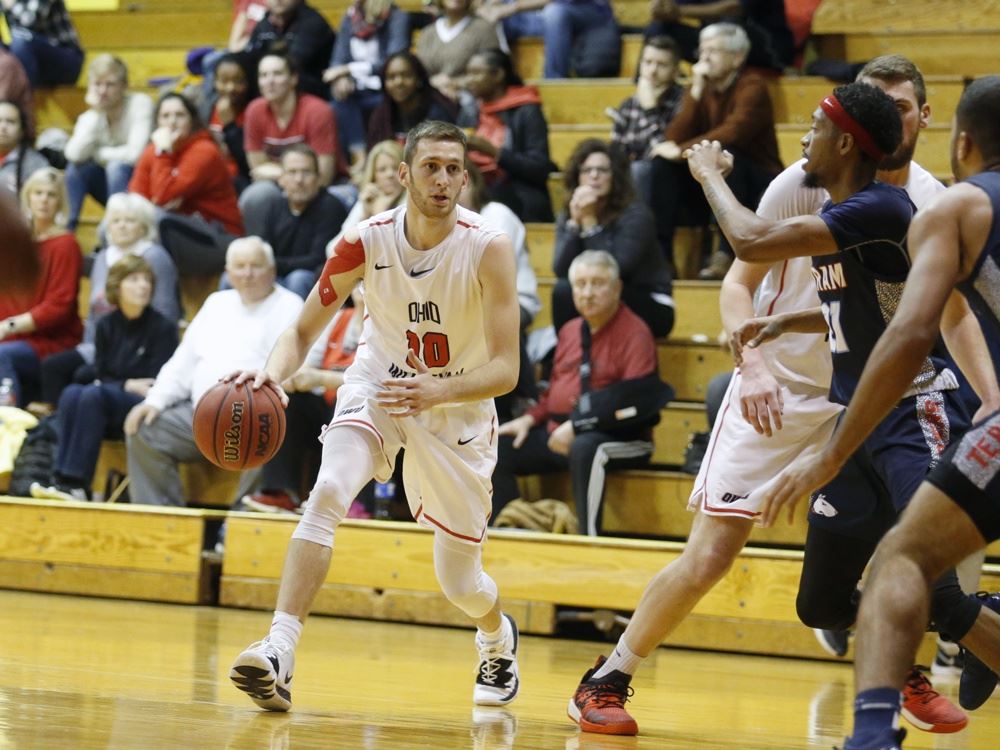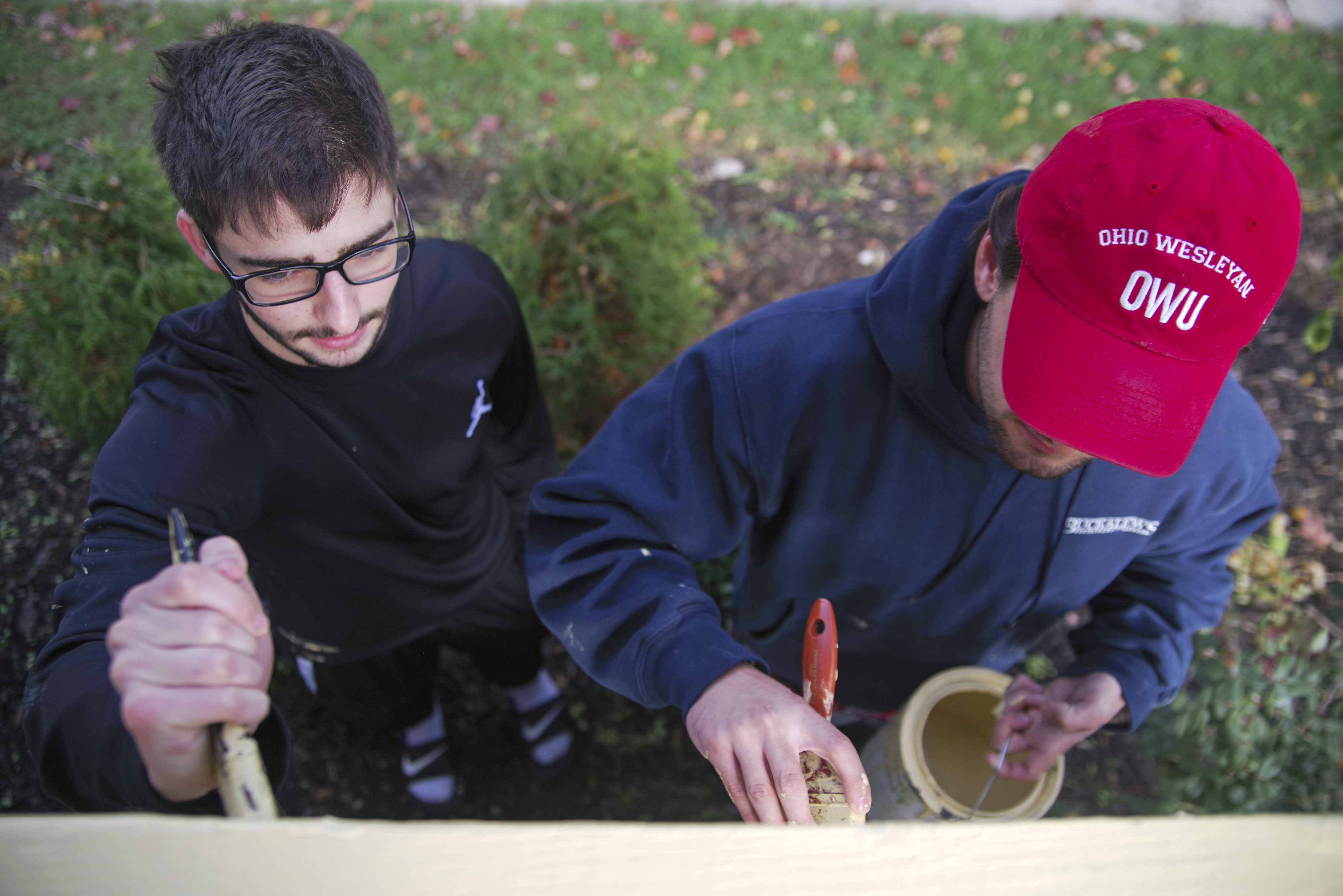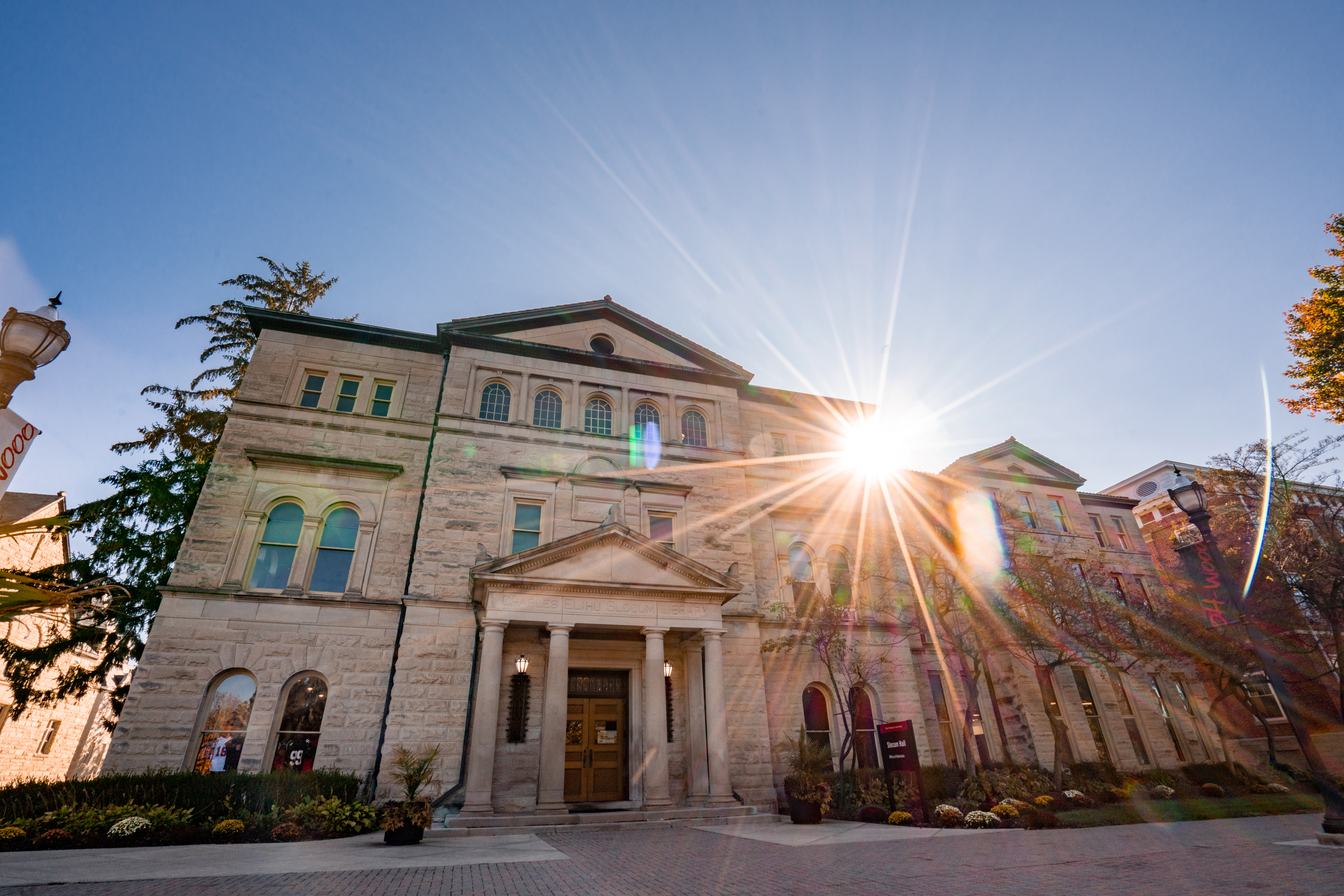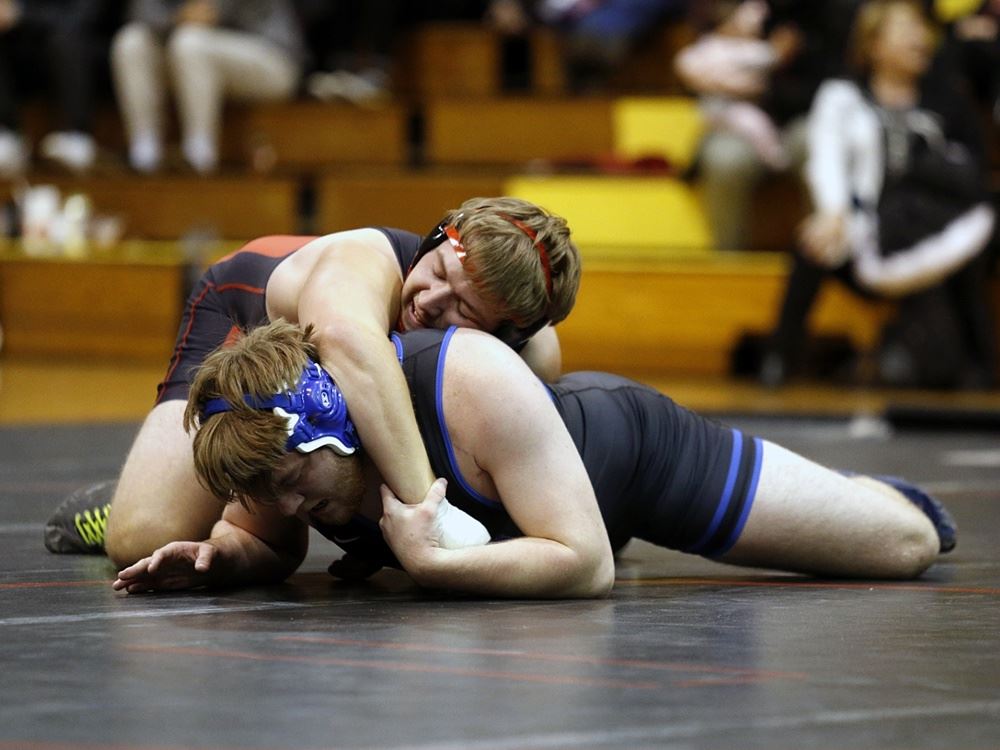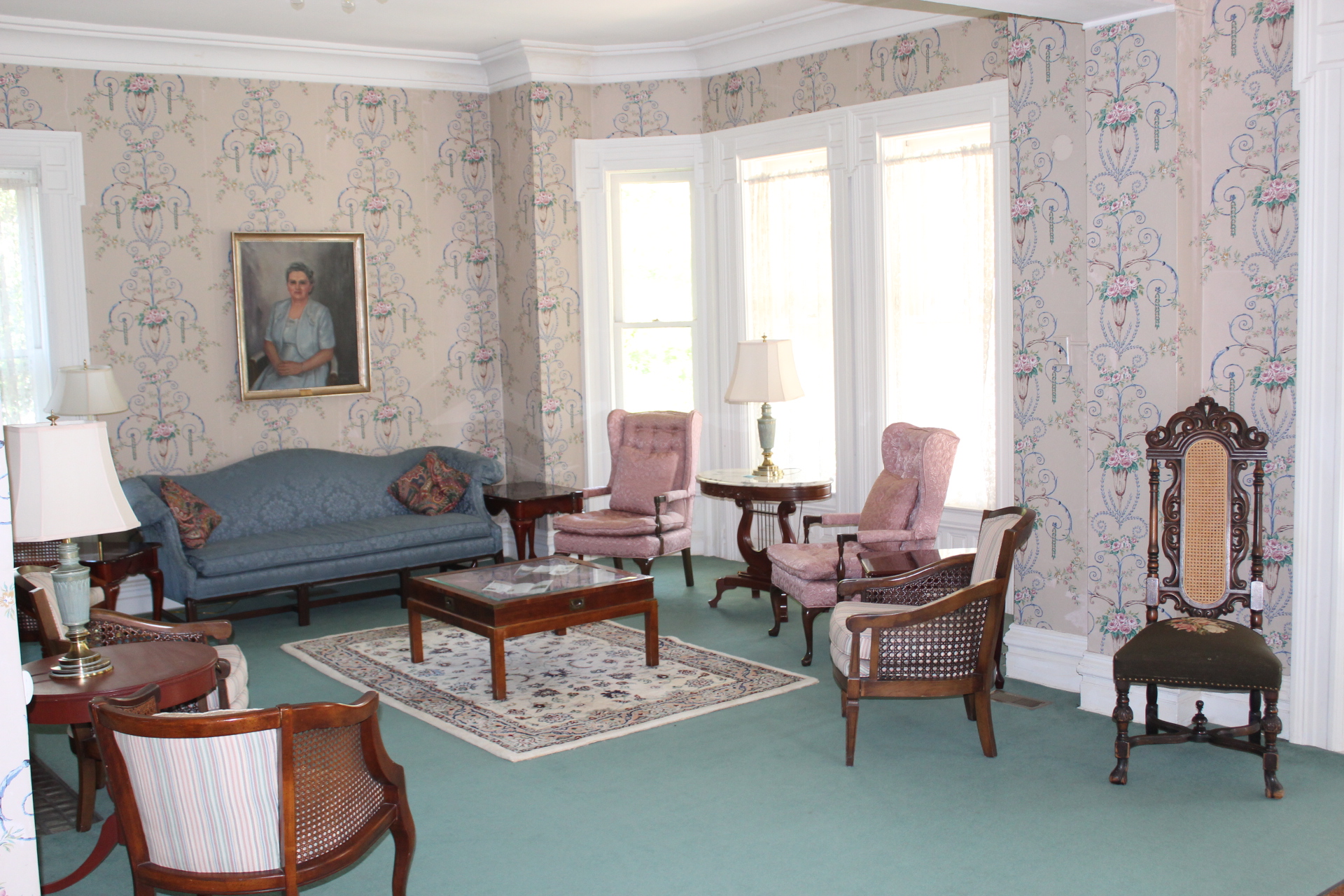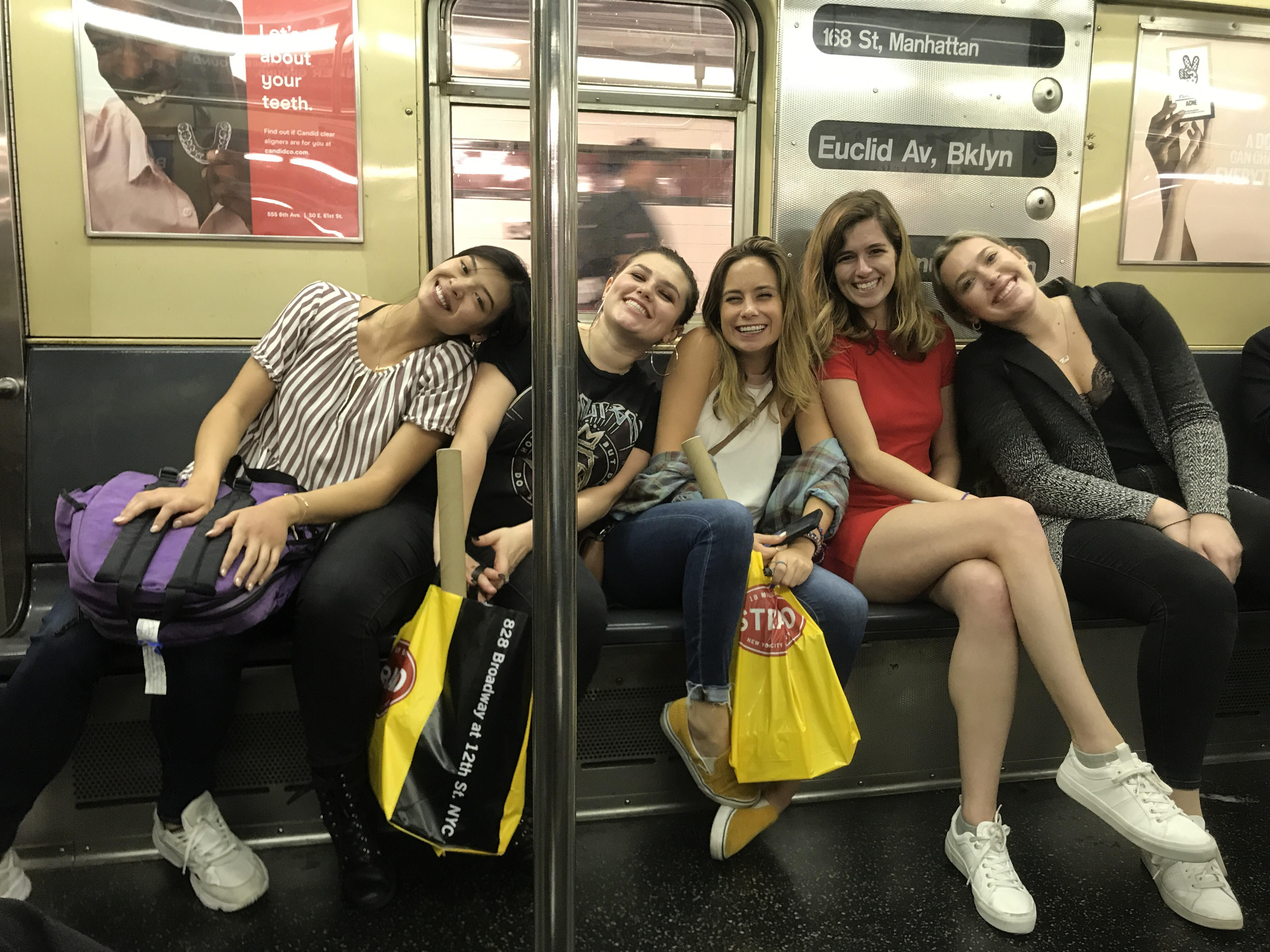Photos and Story by Erin Ross
Online Design Editor
Sunlight shone onto the floral wallpaper of an old Victorian themed home as Denise Randall shared where women struggling with homelessness and financial problems have found refuge in Delaware County.
Randall is the crew chief at the Women’s City Club of Delaware, Ohio, a non-profit organization that provides a home for single women of low-income. The Club’s house is located at 135 N. Franklin St.
Prior to moving into the house in June 2019, Randall lost her home after being catfished. To be catfished means to be manipulated by someone with a false identity on the internet. She battled severe depression and fibromyalgia. She still struggles with fibromyalgia but, as a result of her time at the Club, she is no longer depressed, Randall said.
“If any woman is in need of a place that she needs to call home temporarily, whether that be three months or a year and a half, Women’s City Club is always some place they should try,” Randall said.
According to the Club’s mission statement, the non-profit organization is “…dedicated to providing a safe, affordable and nurturing home for single working women of low income as they transition towards a self-supporting future.”
Women who live at the Club are required to pay a weekly rent of $70, according to MaryAnn Davis, president of the Club’s foundation board.
In addition to the Women’s City Club itself, the organization has a foundation that is responsible for fundraising, according to Jo Ingles, secretary of the foundation board. Both organizations are registered as nonprofits and have separate boards made up solely of volunteers.
The Club houses 10 women at a time and, as of Oct. 18, the home was full, according to Randall.
Some of the women associated with the Club said the stories of women who live there highlight the need for the county to offer more affordable housing.
“I think Delaware needs to have more affordable housing,” said Robyn Davis, previous resident. “And I think that’s a big discussion in this city and county.”
Lee Yoakum, a city of Delaware spokesperson, said there have been discussions among council members about the need for both affordable housing and a balanced housing stock. By this, he means housing that is not only affordable, but is also appealing to individuals looking to transition into a smaller or larger home, he said.
“What our goal as a city is, to make sure that our housing stock is robust and comprehensive,” Yoakum said. “Part of that is, yes, addressing the need for affordable housing.”
Yoakum also said that there are three multi-family apartment residential projects underway that are to be completed in 2020. In the last 10 years, Delaware has not had that many apartment related projects underway at the same time, he said.
Jane Hawes, director of communications for the Delaware County Commissioners, said housing and zoning are handled at the municipality and township level and the county government does not interfere.
Despite all needing a safe place to live, each of the women who stay at the Women’s City Club have had unique experiences.
Jacqueline Oen, a basketball official for Ohio High School Athletic Association, reached out to the Club while in recovery from alcohol abuse. She began abusing alcohol after her husband died and ended up losing a lot, including herself, she said.
The Club and foundation members’ willingness to help and provide housing and mentorship is the most beneficial aspect of the club, Oen said.
“God led me to the Women’s City Club,” Oen said. “I feel like He really did.”
Oen began living in the house in March 2019 and, as of Oct. 18, said she was 13 months sober.
Differently, Marlene Mckenzie, a current resident at the Club, was narcissistically abused and manipulated into moving out of her abuser’s home. After living with her son and his girlfriend’s family in Mt. Gilead, Ohio, Mckenzie found herself living in a car after learning the family was being evicted.
Mckenzie said the club helped and supported her emotionally and she doesn’t know where she would be without it.
“The Women’s City Club is a stepping stone for us women,” Mckenzie said. “We have been displaced in some kind of way or another, so we find ourselves here and we have support here and we have love here and it is a stepping stone for us to get back on our feet financially. But they also build you up here emotionally. They give you the drive and the ambition to go out and make yourself a little bit more self-sufficient.”
Delaware also has a Turning Point shelter that provides victims of domestic violence with a temporary place to stay, according to Robin Amstutz, president of the Club.
Sue Capretta, treasurer for the Club’s foundation, said she believes people in Delaware are naive to the fact that women in their community are at risk for homelessness and in need of help.
“I think they know, but yet it’s never in your neighborhood,” Capretta said.
To improve such a mindset, Capretta said society needs to become less self-centered.
“I think that our society has gotten to be very me-oriented and that concept of caring for others has kind of gone by the wayside,” Capretta said. “I think that we need to get back to where we realize that, no matter how bad your situation is, there’s other people that have a worse situation or equally as bad.”
To prevent individuals from circumstances similar to the women who live at the Club, MaryAnn Davis listed some solutions. The community should educate people about money and how to take personal responsibility, talk with parents about how to properly raise children, and find better ways to deal with mental health, she said.
Capretta said she recognizes that the circumstances of some of the women who live in the home are a result of bad choices. The members of the Club aim to give such women a second chance. Some have a history of substance abuse, according to Ingles, also public relations coordinator for the Club.
“We want to give them a shot because someone has got to give them a shot,” Ingles said. “That is the whole idea. You can’t make someone pay forever for mistakes.”
Ingles also said being involved with the Club is rewarding and she loves to celebrate the successes.
“We have far more success than we do failure,” Ingles said. “When we have success, it’s just really a cool thing to celebrate. And I live for that.”
Robyn Davis, who keeps track of electronic records for the Delaware County Board of Developmental Disabilities, lived at the Club from June 2017 until March 2019. While living at the Club, she eliminated credit card debt that she had accumulated after her two sons graduated high school and she no longer received child support. She is now a member of the Club’s board and is on both the Resident Relations Committee and the committee dealing with mentorship partnering.
Davis is an example of one of the Club’s successes.
The Club was originally founded in 1954 by Zuilla Way, whose husband bought the home for her to use as a social club with her friends, according to MaryAnn Davis. Following World War II, there was limited housing for women as soldiers returned to their homes and jobs, she said. So, from the beginning, the charter required the Club to offer housing for low-income women.
Many of the women who are involved in the Women’s City Club believe Way’s vision was ahead of its time.
Robyn Davis said, “I think Zuilla Way, that donated that house to the foundation to run, had a foresight and a vision into the future that other people probably didn’t have.”
Despite its historical presence, not all individuals are aware of the Club’s presence and mission.
“The Women’s City Club is one of Delaware’s best kept secrets,” said Randall, a retired nurse.
To spread awareness, the Club has put on fundraisers, such as a princess tea, and rented out the first floor of the home for special events.
“We’ve done a lot of fundraisers,” MaryAnn Davis said. “We need to find a better way of getting the word out and also raising money.”
The Club relies on donations, grants and fundraisers to pay for renovations and other necessary home repairs. The foundation is responsible for this money, which remains separate from the women’s rent. Rent is handled through the Club’s treasury and is used to cover home utilities and insurance, said MaryAnn Davis.
Data show in:
2017: $1,161.05 in personal donations from individuals and $14,145.33 in public donations from corporations and businesses (including a $8,333.33 grant from the Delaware County Commissioners for new upstairs windows).
2018: $601.96 in personal donations from individuals and $1,433.30 in public/private donations from programs such as Kroger, Amazon Smiles and other donors.
2019: $414.31 in personal donations from individuals and $1,209.50 in public/private donations from programs such as Kroger, Amazon Smiles, and other donors (as of Sept. 29, 2019).
Additionally, the Club’s foundation received $3,078.79 in charitable withholdings in 2018 and $5,492.80 in 2019 (as of Sept. 29, 2019).
None of the money the Club or foundation receives goes toward paying for staff or administration. All of the board members for both the Club and the foundation are volunteers.
“They are truly a society of women who want to see other women succeed, and they’re there when you need them,” Oen said.
The women who volunteer for the Club and the foundation aim to help the women living at the home transition into a “self-supporting future,” as stated in its mission statement.
Capretta said, “Our goal is to help these ladies move forward and to be able to get out of our house and into their own.”


